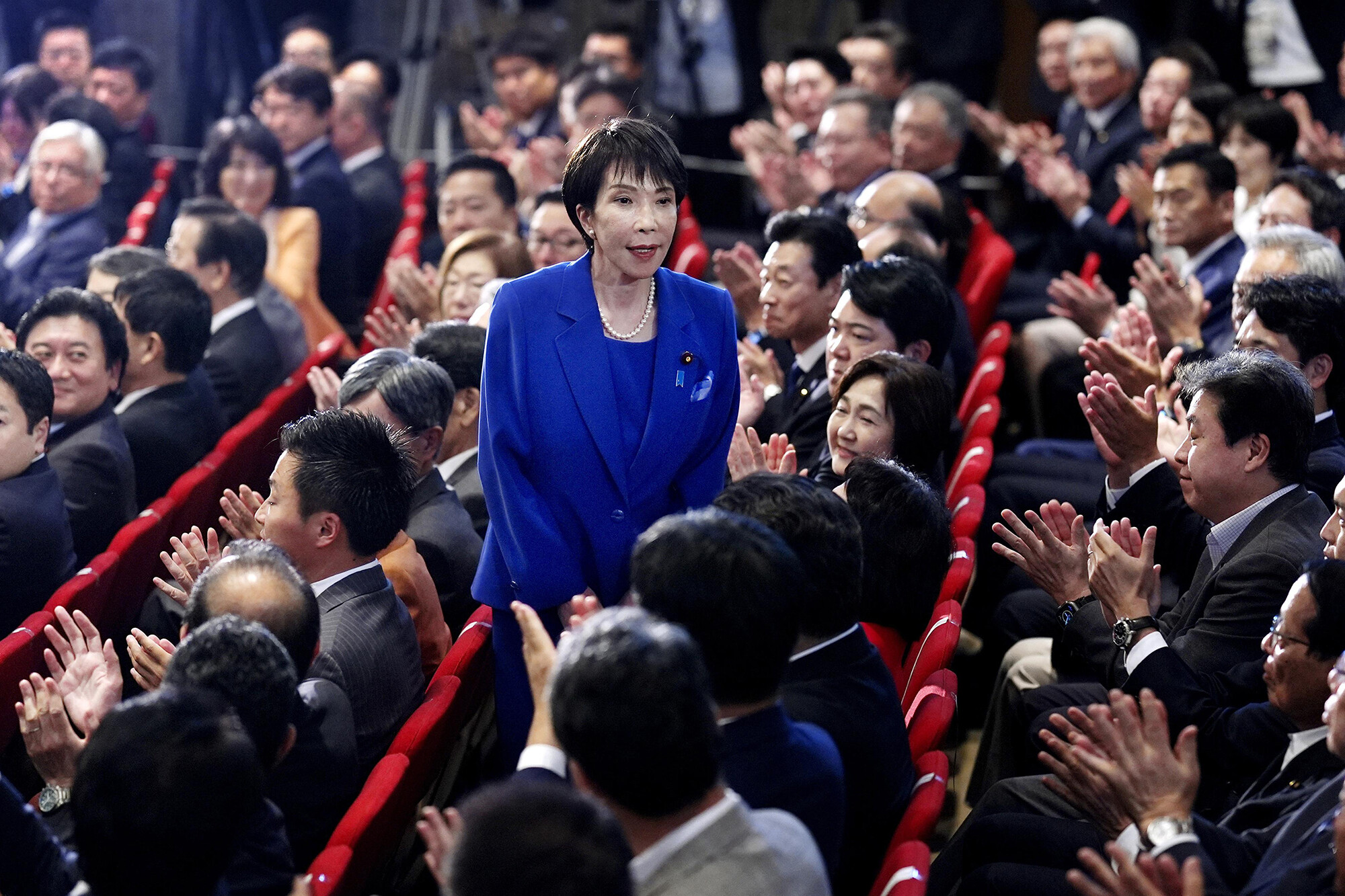
(From left) Doctoral student Hannah Yamagata, research assistant professor Kushol Gupta, and postdoctoral fellow Marshall Padilla holding 3D-printed models of nanoparticles.
(Image: Bella Ciervo)
3 min. read

The battle over who will become Japan’s next prime minister is expected to be decided in a parliamentary vote next week, with the most likely winner being Sanae Takaichi, the newly elected leader of Japan’s Liberal Democratic Party (LDP). Despite a splintered coalition, Takaichi still commands the largest voting bloc in parliament, called the Diet, and could become the country’s first female prime minister. With the next general election scheduled for 2028, the next prime minister will have some time to form a government before facing voters.
Penn Today spoke to Daniel Smith of the Department of Political Science about his insights into Takaichi’s politics, her path to the premiership, and how she may govern.
In last year’s leadership contest, Takaichi was the top candidate in the first round of voting, which includes party members, but she lost to former Prime Minister Shigeru Ishiba on the second round, in which legislators’ votes dominate.
Ishiba is more of a centrist and accordingly enjoyed popular support outside of the LDP’s core voter base. In contrast, Takaichi is a hardline conservative, with support among the LDP’s right wing, but she faces more skepticism from voters and other parties. The LDP’s longtime coalition partner, Komeito, exited the LDP coalition last week after failing to find common ground in negotiations with her.
In her campaign for the party presidency, Takaichi expressed some negative views toward foreigners and stressed the importance of preserving Japan’s traditions. But beyond these issues Takaichi is a protégé of former Prime Minister Shinzo Abe, and most of her policies would largely continue his legacy, including in terms of economic policy, defense, and support for constitutional revision. Takaichi has so far tapped members of the conservative intraparty factions of former Prime Minister Taro Aso and former foreign minister Toshimitsu Motegi to serve in key party leadership roles, which further suggests a shift to the right.
If elected by the Diet, Takaichi would be the first female prime minister. This would be a milestone for Japan, which has struggled to increase gender representation in politics more widely. In the most recent general election of 2024, a record 73 women were elected to the lower house, but this only accounts for 16% of the total seats and is well below the global average of 27%.
Political science research on gender representation finds that electing women to high-profile positions can sometimes have a ‘role model’ effect that encourages more women to run for office. But many of the factors constraining women’s representation in Japan are structural—such as entrenched male incumbents, single-member districts, and long working hours—rather than situational.
The LDP lost its majority in the lower house in 2024 and in the upper house in 2025, so it is currently governing in a minority coalition. It lost voters’ trust after rising inflation and a series of political finance scandals last year. Regaining voters’ trust will be the biggest challenge for the party moving forward, and Takaichi will face internal resistance to many reforms she might wish to pursue.
Outside of the LDP, Takaichi’s primary challenge will be steering legislation through the Diet in a minority coalition. The mix of parties added to the coalition will also complicate policymaking and require compromises on key policy priorities.
A key player now is the Democratic Party for the People (DPP) and its leader, Yuichiro Tamaki. There is some talk about whether the LDP might bring the DPP into the coalition, although Tamaki has said he is not interested in cabinet positions and instead is focused on policy concessions as requirements for outside support. The Osaka-based Ishin no Kai, or Ishin, could also come into play as a potential coalition partner.
But on the opposition side, Tamaki has also been mentioned as a possible alternative candidate for prime minister, potentially blocking Takaichi’s election if the opposition coalesces around this idea. The largest opposition party, the Constitutional Democratic Party, is in talks with the DPP, Ishin, and Komeito, and together these parties would command a majority of seats. This kind of cooperation will be a hard feat to accomplish, however, given the fragmentation and policy disagreements among the opposition parties.
The prime minister can call for new elections at any time. Much will depend, I think, on whether the next prime minister is able to build a stable working government, whether in a minority coalition with legislative support from other parties or in an expanded majority coalition. If Takaichi is elected prime minister, calling for new elections now would be politically risky for the LDP since the party is weak and risks internal splintering if its electoral losses continue.

(From left) Doctoral student Hannah Yamagata, research assistant professor Kushol Gupta, and postdoctoral fellow Marshall Padilla holding 3D-printed models of nanoparticles.
(Image: Bella Ciervo)

Jin Liu, Penn’s newest economics faculty member, specializes in international trade.
nocred

nocred

nocred